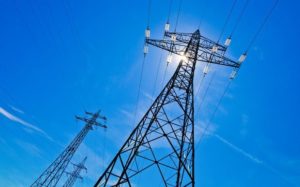The Green Party has launched a plan for cheaper power bills, cleaner electricity generation, and a smarter electricity network
The Empowering New Zealand comprehensive plan for the electricity sector includes:
- $112 million for winter warm-up payments to help low-income households cover their power bills
- setting a goal for 100 percent renewable electricity by 2030 (in average hydrological conditions)
- an investigation into the electricity wholesale market
- encouraging lines companies to work together and embrace new technology to bring down costs
- modernising industry rules to encourage competition, transparency and use of data.
“Setting a goal for 100 per cent renewable electricity generation is bold, achievable, and the right thing to do for our planet,” Green Party energy and resources spokesperson Gareth Hughes believes.
“New Zealand can help lead the global clean energy revolution, creating jobs and exporting our clean energy expertise to the world, but we need government leadership to make it happen.
“The electricity industry is entering a time of massive change where big old power stations and transmission lines are being supplemented by local networks of people and communities who produce, sell, store, and buy their own electricity.”
The Greens cite a report entitled Toward 100% Renewable Electricity How New Zealand can develop a fully renewable electricity system prepared by Efficient Energy International and Norman Smith, Senior Adjunct Associate/Senior Research Fellow – New Zealand Rocky Mountain Institute
The report’s authors believe a new impetus has been created for renewable electricity with the signing of the COP21 global agreement on greenhouse gas (GHG) emissions reduction.
By world standards a power system like New Zealand’s with 82 per cent renewable electricity (and heading to 90 per cent) is unique and increasingly desirable, they say.
Achieving greater than 90 per cent renewable generation is likely for the New Zealand electricity system under business as usual, and should get to 94-98 per cent over the next decade and a half.
One hundred per cent renewable generation is entirely possible, the Greens believe, but like most power markets in the world, some changes are required to enable the necessary shift.
Managing New Zealand’s variable annual hydro water charge – discharge cycle has been key to improving renewable energy proportions overall, and will remain important to the country’s productive future, it assures.
However, a multifaceted focus on both demand and supply side aspects of the system, their drivers, and how they affect system resilience is needed if New Zealand is to advance beyond 90 per cent renewables and realise multiple benefits to the country and its economy. This is already starting to happen in New Zealand, the report argues.
Changing drivers for demand for electricity are reducing peak demand and improving resilience in the system as it shifts to renewables:
- since 2006 the demand for electricity in New Zealand has stayed at just under 40,000 GWh per annum. System demand looks like it will remain in a flat-lining stasis in the medium term.
- Transpower have contracted 133MW of demand response. Enernoc, a private-sector energy management company, already had 100MW of contracted demand response in 2012. Transpower are pursuing a target of 650MW of contracted demand response.
- Demand reduction is growing. 370MW of demand reductions was added in 2015 by a broad range of end-use electricity efficiency measures across the economy. Cumulative demand reductions reached 750MW – a trend that continues to grow as minimum energy performance standards, appliance labelling and electricity efficiency reduce both electricity use and peak demand. These reductions were delivered at 0.6c/kWh, 7% of current system long run marginal cost – the current cost of new marginal supply, indicating large yet untapped demand-side electricity efficiency potentials.
The report’s authors argue that these measures will continue to put downward pressure on the demand for electricity, cost structures in the electricity system, and slow the need for investment in new centralised generation stock and peaking plant.
The upstream benefits available from electricity efficiency and demand management flexibility are significant, the party believes, citing one study which identifies that cost-effective demand side measures could reduce New Zealand’s required electricity system investment by up to $3.5 billion in 2030 and up to $10.6 billion in 2050. International studies also highlight similar prospects.
Progress to increased levels of renewable energy depends currently on the retirement of coal and gas plants as they reach end of life and their role is diminished by reducing system and regional peak demand. A significant reserve of consented renewables is already available should new generation be required, the report assures.
Distributed photovoltaic power systems generate on the demand side of the meter. Global prices are falling and supplied volumes are growing logarithmically. Already these make an attractive investment for some consumers. The report asks how much will be generated as thousands of home owners and businesses install photovoltaic systems, How will these systems affect national supply and demand peaks? How will they access back-up supply while minimising peak demand costs?
The answers lie, the report’s authors believe, in how the electricity system sends time of use price signals that reward generators for their contribution to addressing peak demand and capacity costs.
While existing power prices are cost-reflective and provide efficiently balanced incentives for demand side energy efficiency, supply side renewables and conventional generation, both consumers and generators need to receive more dynamic time of use energy and capacity signals, reflecting the realities of multiple users and suppliers in real time. This also offers more accurate rewards for demand management, energy efficiency and exported power based on supply – demand dynamics.
The report believes the power system is transforming from one dominated by centralised generators to one where “novel consumer offers and the decisions of 4.5 million actors on a persistent path of electrification” will influence the system’s response to everything from weather perturbations, design of homes and business processes and future power plant investments.
“We have consulted the electricity industry to design a future-focused system and I’m confident the plan is ready to be acted on by the next government,” Hughes says.




